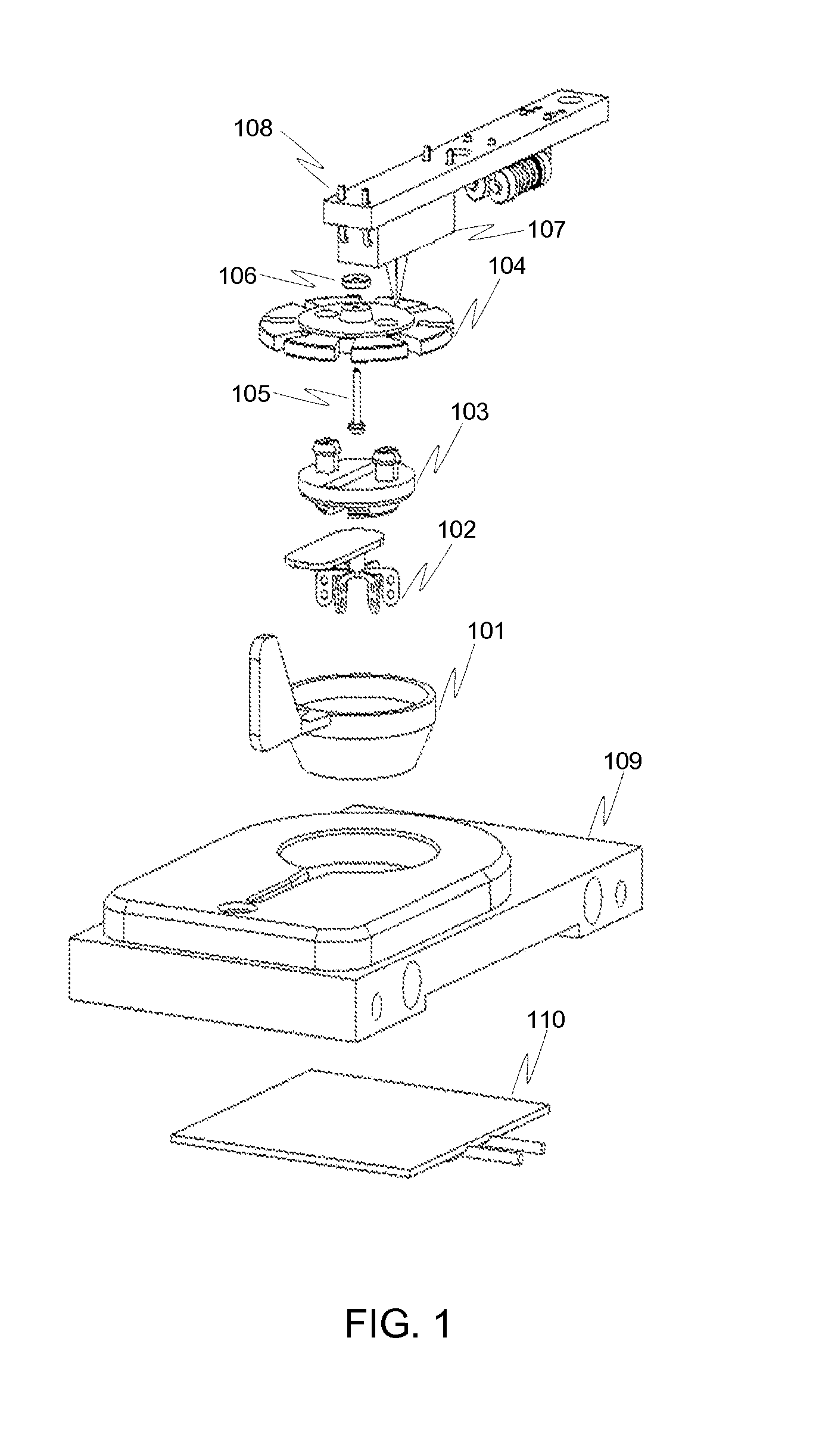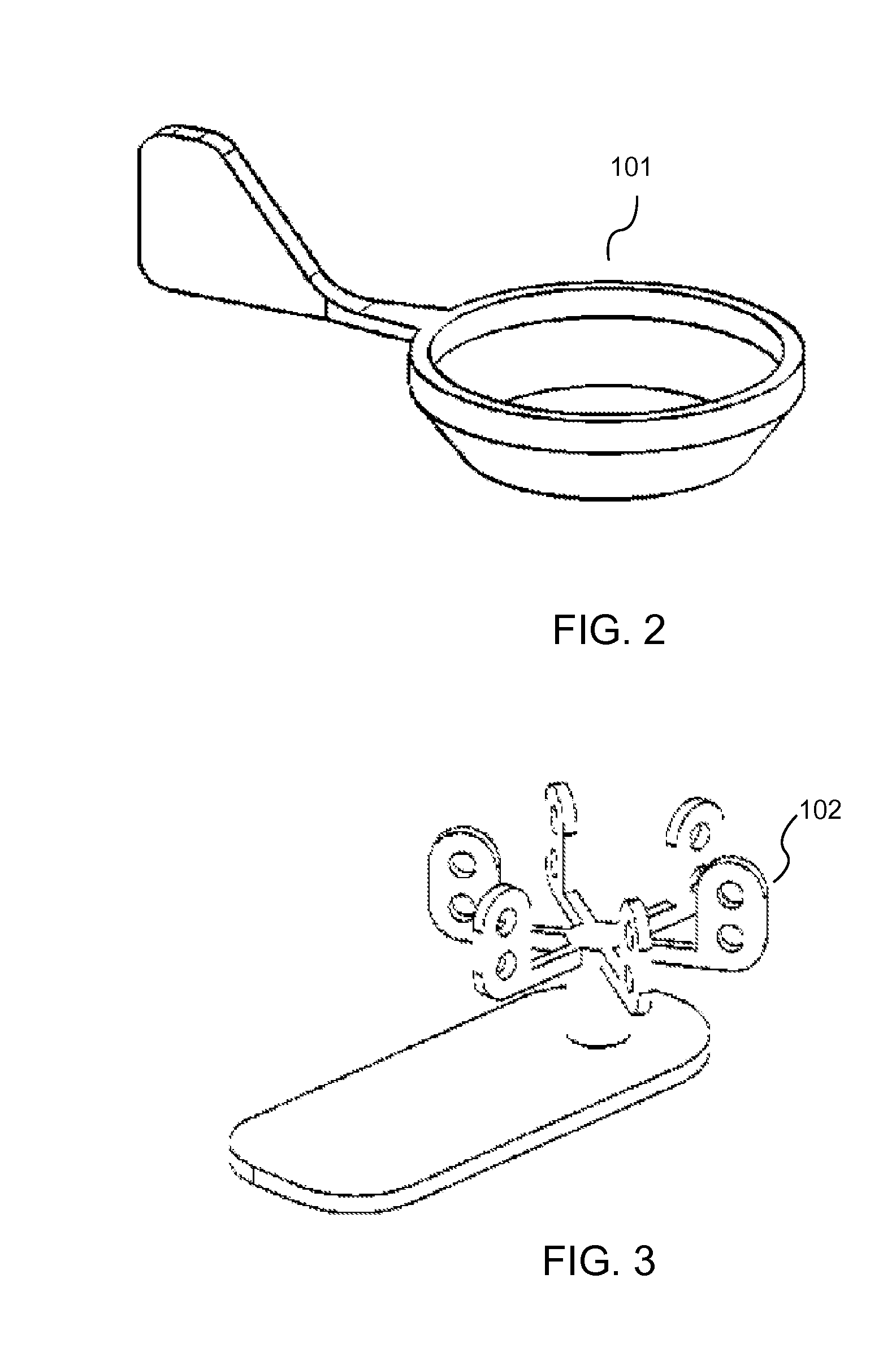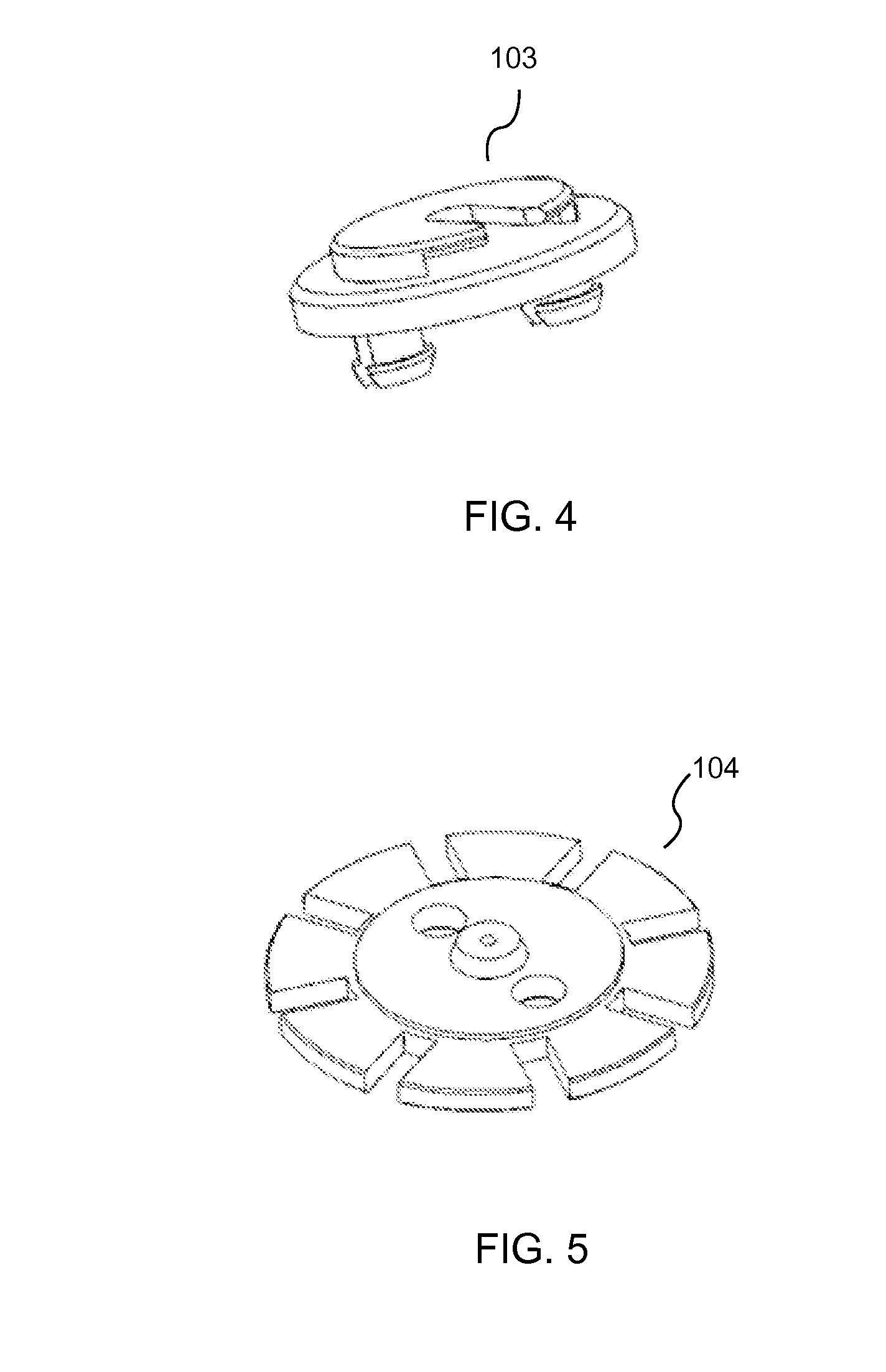Device and Method for Performing Blood Thromboelastographic Assays by Magnetic Sensing
a technology of magnetic sensing and elastography, which is applied in the field of blood thromboelastographic assay, can solve the problems of increasing the risk of bleeding (thrombosis) or obstructive clotting, and the predictive accuracy of surgical bleeding of conventional coagulation assays is poor, and the patient is not able to test the hemostasis function of hypothermic patients
- Summary
- Abstract
- Description
- Claims
- Application Information
AI Technical Summary
Benefits of technology
Problems solved by technology
Method used
Image
Examples
Embodiment Construction
[0029]All illustrations of the drawings and descriptions of the embodiments are for the purpose of describing selected versions of the present invention and are not intended to limit the scope of the present invention.
[0030]The present invention relates to a device and method for performing whole blood thromboelastography assays. It is also related to a portable device that is easy to use, accurate, and quick for testing a patient's blood at bedside, physician's office, operating room, or even in battle field. The present invention, a Magnetic Sensor Elastometry Device (MSED), measures the viscoelasticity properties of whole blood. During the test, once the coagulation cascade is activated, whether through the intrinsic pathway, extrinsic pathway or a combination of both, thrombin is formed. The thrombin cleaves soluble fibrinogen into fibrin monomers, which spontaneously polymerize to network of cross-linked fibrin. A unique property of this network structure is that it behaves as ...
PUM
| Property | Measurement | Unit |
|---|---|---|
| constant temperature | aaaaa | aaaaa |
| temperature | aaaaa | aaaaa |
| angular rotation | aaaaa | aaaaa |
Abstract
Description
Claims
Application Information
 Login to View More
Login to View More - R&D
- Intellectual Property
- Life Sciences
- Materials
- Tech Scout
- Unparalleled Data Quality
- Higher Quality Content
- 60% Fewer Hallucinations
Browse by: Latest US Patents, China's latest patents, Technical Efficacy Thesaurus, Application Domain, Technology Topic, Popular Technical Reports.
© 2025 PatSnap. All rights reserved.Legal|Privacy policy|Modern Slavery Act Transparency Statement|Sitemap|About US| Contact US: help@patsnap.com



